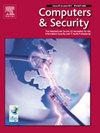基于传感器时空信息的自动驾驶车辆入侵检测系统
IF 4.8
2区 计算机科学
Q1 COMPUTER SCIENCE, INFORMATION SYSTEMS
引用次数: 0
摘要
网联自动驾驶汽车(cav)在提高驾驶安全性和舒适性方面具有巨大潜力,但它们仍然面临网络安全风险。入侵检测系统(IDS)已成为解决这一问题的主要手段。在考虑传感器相关性的现有研究中存在两个弱点。首先,很少有研究关注传感器之间的相关程度。其次,现有的研究通常只关注异常检测,而忽略了攻击目标的精确定位。本文提出了一种基于车载传感器时空信息的两阶段入侵检测系统。第一阶段设置为行为预测器,它使用历史数据来预测当前数据。其中,空间多头图注意(MGAT)层通过图结构中的注意权重考虑传感器之间的相关程度,时间多头图注意层对单个传感器在不同时间点的数据依赖性进行建模。在第二阶段,攻击检测器首先根据预测值与观测值的偏差检测异常,然后引入阈值偏差比来定位被攻击传感器。在真实车辆数据集上的实验结果表明,该系统能够有效检测多种类型的攻击,平均F1得分为98.28%,比现有方法提高了至少1.45%。在各种单传感器攻击场景中,识别攻击目标的准确率超过97.00%。本文章由计算机程序翻译,如有差异,请以英文原文为准。
Intrusion detection system for autonomous vehicles using sensor spatio-temporal information
Connected Autonomous Vehicles (CAVs) have great potential to improve driving safety and comfort, but they still face cybersecurity risks. Intrusion Detection Systems (IDS) have now become the primary means of addressing this problem. There are two weaknesses in existing studies that consider sensor correlation. First, few studies focus on the degree of correlation between sensors. Second, existing studies usually focus only on anomaly detection and ignore the precise location of attack targets. In this paper, we propose a two-stage intrusion detection system based on in-vehicle sensors spatio-temporal information. The first stage is set as a behavior predictor, which uses historical data to predict current data. Where the spatial Multi-head Graph Attention (MGAT) layer considers the degree of correlation among sensors through the attention weights in the graph structure, and the temporal Multi-head Graph Attention layer models the dependence of data at different time points of a single sensor. In the second phase, the attack detector first detects anomalies based on the deviation between predicted and observed values, after which a threshold deviation ratio is introduced to locate the attacked sensor. Experimental results in real vehicle data sets show that the proposed system can efficiently detect multiple types of attacks with an average F1 score of 98.28%, which is at least 1.45% higher than the existing methods. In various single-sensor attack scenarios, the accuracy of identifying attack targets exceeds 97.00%.
求助全文
通过发布文献求助,成功后即可免费获取论文全文。
去求助
来源期刊

Computers & Security
工程技术-计算机:信息系统
CiteScore
12.40
自引率
7.10%
发文量
365
审稿时长
10.7 months
期刊介绍:
Computers & Security is the most respected technical journal in the IT security field. With its high-profile editorial board and informative regular features and columns, the journal is essential reading for IT security professionals around the world.
Computers & Security provides you with a unique blend of leading edge research and sound practical management advice. It is aimed at the professional involved with computer security, audit, control and data integrity in all sectors - industry, commerce and academia. Recognized worldwide as THE primary source of reference for applied research and technical expertise it is your first step to fully secure systems.
 求助内容:
求助内容: 应助结果提醒方式:
应助结果提醒方式:


